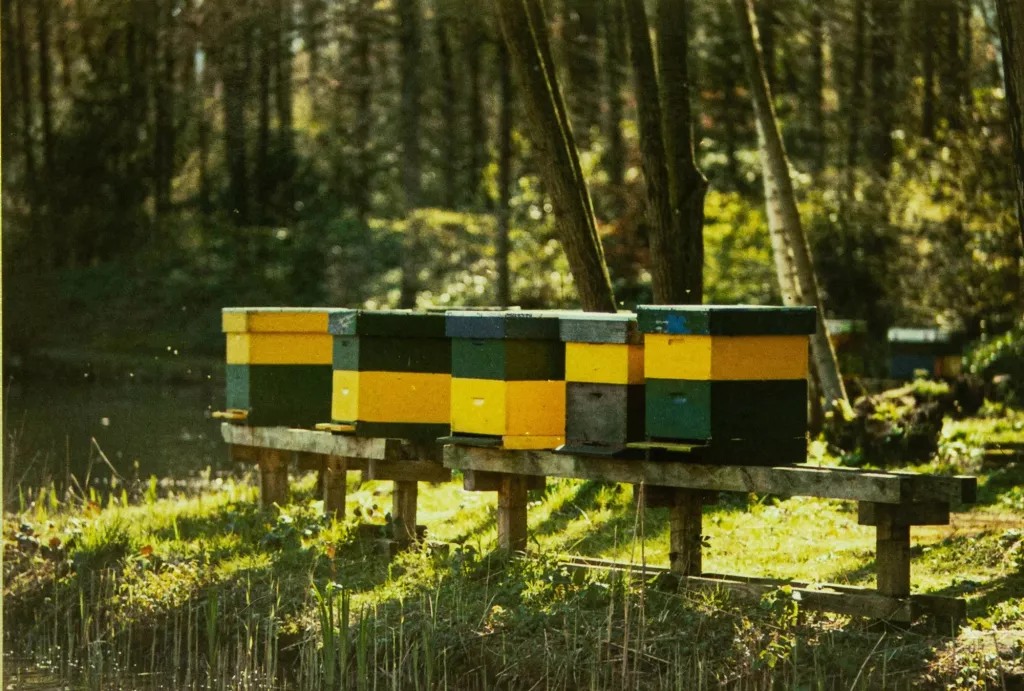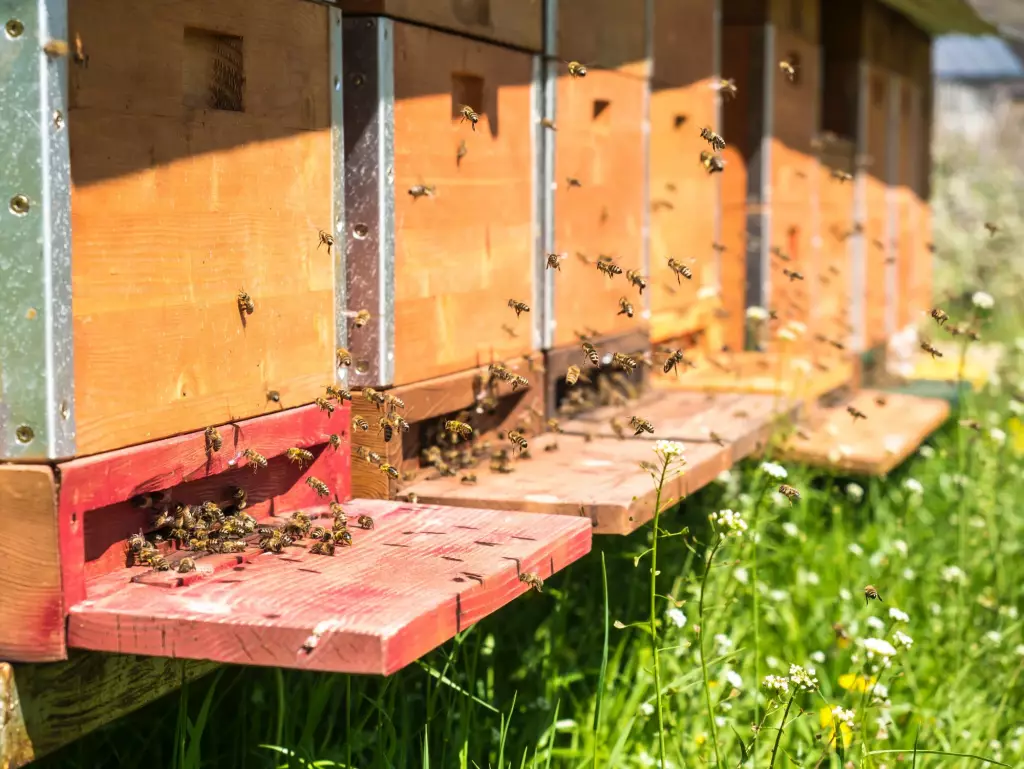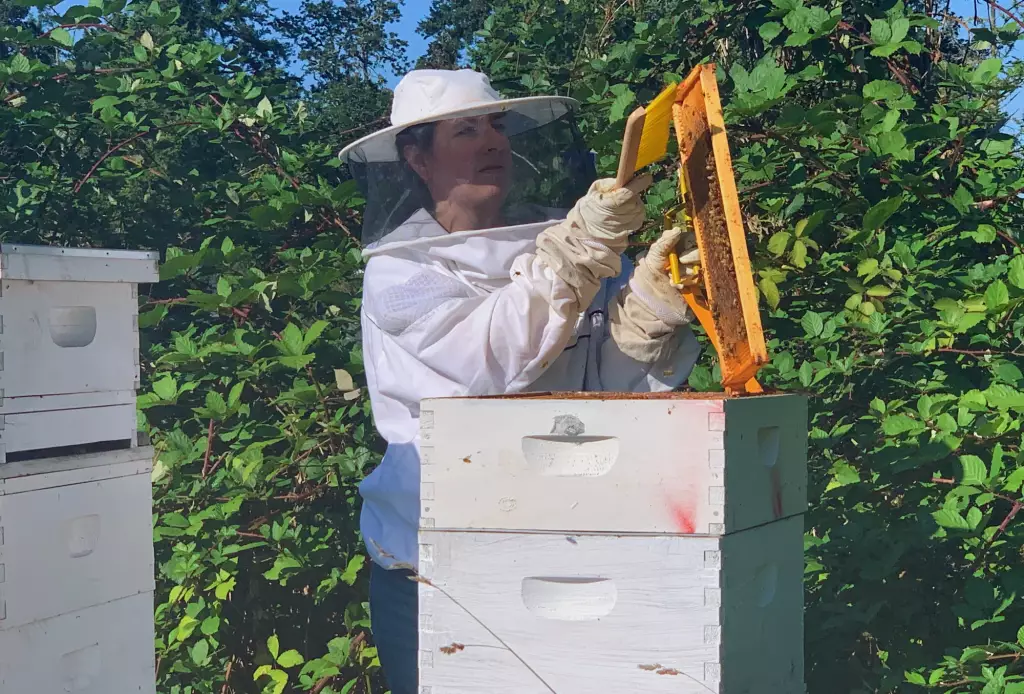Advantages of Double Brood Box (Pros and Cons Explained)
The two brood boxes provide more opportunities for the colony to expand and grow, which is beneficial for both the beekeeper and the bees. Having two brood boxes in your beehive has its pros and cons, such as increased bee populations and the need for more space. Let's explore more of them in this article.
Double brood boxes provide several advantages for beekeepers, such as increased honey production, improved disease control, and better colony health overall. Double brood boxes could also mean additional costs, the need for more space in the apiary, increased complexity of management, and an increased risk of swarming.
Get the facts to decide if double brood box set-ups are the right solution for your beehive. Continue reading below to learn more.
Summary
- A double brood box consists of two compartments for honey and pollen separated from the bees.
- There are pros to having a double brood box including increased productivity and easier management.
- There are cons to consider before having a double brood box including additional costs and the increased risk of swarming.

On this page:
Double Brood Box For Your Bees
A double brood box is a beekeeping device that consists of two stacked boxes, each containing frames of comb that can be used to store honey, pollen, and brood. The queen bee and her helpers live in the top box, which also serves as a storage area for honey, pollen, and young bees.
The double brood box allows for two separate compartments, allowing the beekeeper to easily manage the queen and her attendants, while also having an area for honey and pollen storage. The double brood box is an essential tool for beekeepers and helps to maintain a healthy and productive hive.

Pros of Having a Double Brood Box
Having a double brood box for your bees can be a great way to maximize your beekeeping efforts. Here are some of the pros to consider:
1. Increased productivity
Having a double brood box allows bees to build more comb and store more honey, resulting in increased productivity. Having a double brood box for bees can increase productivity by providing the bees with more space to lay eggs and raise the young. This can help the colony grow faster and produce more honey.
2. Improved bee health
Having a double brood box allows bees to create separate compartments for different needs, such as having one box devoted to the brood and another one to pollen and honey. It also allows the colony to create more honey and pollen stores, providing a greater food reserve to help them survive the winter months and other times of stress.
This helps improve the health of the colony, as the bees can separate their resources and prevent overcrowding. A double brood box also helps to reduce the amount of swarming and increase the production of new drones and queens, which is necessary for the health of the colony.
Additionally, if one box becomes full, the bees can move into the second one and will not need to move their brood, thus reducing the likelihood of a swarm.
3. More space for the queen
Having a double brood box provides more space for the queen to lay her eggs, resulting in a larger and healthier colony. This can help the bees produce healthier and more viable offspring, as well as reduce the risk of disease, parasites, and other issues.
4. Improved hive ventilation
Having two boxes allows for better air circulation, as air can move through the two compartments more easily, which helps keep the hive cool during hot weather. A double brood can improve hive ventilation by creating a buffer zone between the inner and outer brood boxes.
A double brood box can also help to keep the hive temperature more consistent. This is important for the development of the larvae, which in turn leads to more bees hatching from the eggs. By allowing air to flow between the two boxes, the inner box can stay warmer and be better regulated for the bees.
Additionally, the double brood can help to reduce the amount of moisture that builds up in the hive, which can lead to mold and mildew. Finally, it can help reduce the amount of heat loss from the hive in colder temperatures, improving the overall health of the colony.
5. Increased honey production
More bees means more foragers collecting nectar and pollen from flowers. This increases the amount of honey produced by the hive. Having two boxes allows the bees to store more honey, resulting in increased honey production. By having two brood boxes, the queen has more room to lay eggs, resulting in more bees.
6. Easier management
A double brood box is beneficial for beekeepers because it allows them to better manage the bee colony. Having two boxes makes it easier to manage the hive, as the beekeeper can inspect each box separately and know exactly what is going on in the hive.
It consists of two separate boxes with frames of honeycomb and space for the bees to store honey and pollen. By using two boxes, the beekeeper can more easily monitor the health of the colony as well as the amount of honey and pollen in the hive. Because one box can be used for breeding and the other for storing honey, the beekeeper can more easily control the number of bees in the hive.
The two boxes can be put in various locations around the hive, making it simpler to regulate the hive's temperature. This allows the beekeeper to better manage the temperature in each box. Finally, the double brood box allows the beekeeper to inspect the frames for diseases and parasites, as the two boxes can be easily separated.

Cons of Having a Double Brood Box
Having a double brood box can be a great idea, but there are some downsides to consider. Here we'll look at the cons of having a double brood box.
1. Cost
A double brood box can be significantly more expensive than a single box. A double brood box can be significantly more expensive than a single box because it requires twice the amount of materials and labor to construct. This includes twice the amount of wood, screws, nails, paint or other protective coatings, and any other hardware necessary for assembly.
Additionally, the double brood box will need to have twice the number of frames and foundation, which will add to the overall cost of the box. The cost of the two boxes will also be compounded by the need to purchase two sets of tools, such as a hammer, drill, saw, and screwdriver, to properly assemble the double brood box.
2. Space
A double brood box requires more space than a single box, which may not be available in some beekeeping operations. A double brood box requires more space than a single box, as it is made up of two separate boxes stacked one on top of the other. This means that the beekeeper will need to provide more space for the hive, including a larger bee yard or apiary.
Additionally, the beekeeper may need to provide more stands or other support structures to ensure the stability of the hive. The extra space required by a double brood box may not be available in some beekeeping operations, such as those with limited space or those that do not have access to additional stands or support structures.
3. Increased complexity
Adding a second brood box can increase the complexity of the hive and make it more difficult to manage. When a beekeeper adds a second brood box to the hive, there are a few additional considerations they should keep in mind.
First, the beekeeper needs to make sure that the second brood box is placed correctly on top of the existing box so that the bees can move between the two boxes easily. An additional inner cover may need to be added between the two brood boxes to help regulate the temperature and humidity levels inside the hive.
Additionally, the beekeeper needs to make sure that the two boxes are properly connected, either with metal frames or with a bee escape board. This ensures that the bees can move easily between the two boxes for foraging, ventilation, and brood-rearing. The beekeeper should also ensure that the boxes are properly ventilated and that the hive entrance is large enough for the bees to move between the two boxes.
Finally, the beekeeper should be aware that, because of the added complexity of the hive, it will take more effort to manage. The beekeeper will need to monitor the two boxes more closely to make sure that the hive is healthy, and that the bees can move between the boxes easily.
4. Increased risk
Some beekeepers worry that adding a second brood box increases the risk of swarming and other hive problems. Beekeepers who worry about adding a second brood box may cite several potential risks.
- They may note that adding a second brood box can increase the number of bees in the hive, making it more likely that the hive will swarm.
- They may be concerned that the two boxes will cause a temperature imbalance in the hive, making it difficult for the bees to regulate the temperature of the hive.
- The extra space may cause the bees to become overcrowded, leading to health and sanitation issues.
- Finally, since the two boxes often need to be separated by an excluder, this can cause the bees to become more aggressive, leading to stinging incidents.
